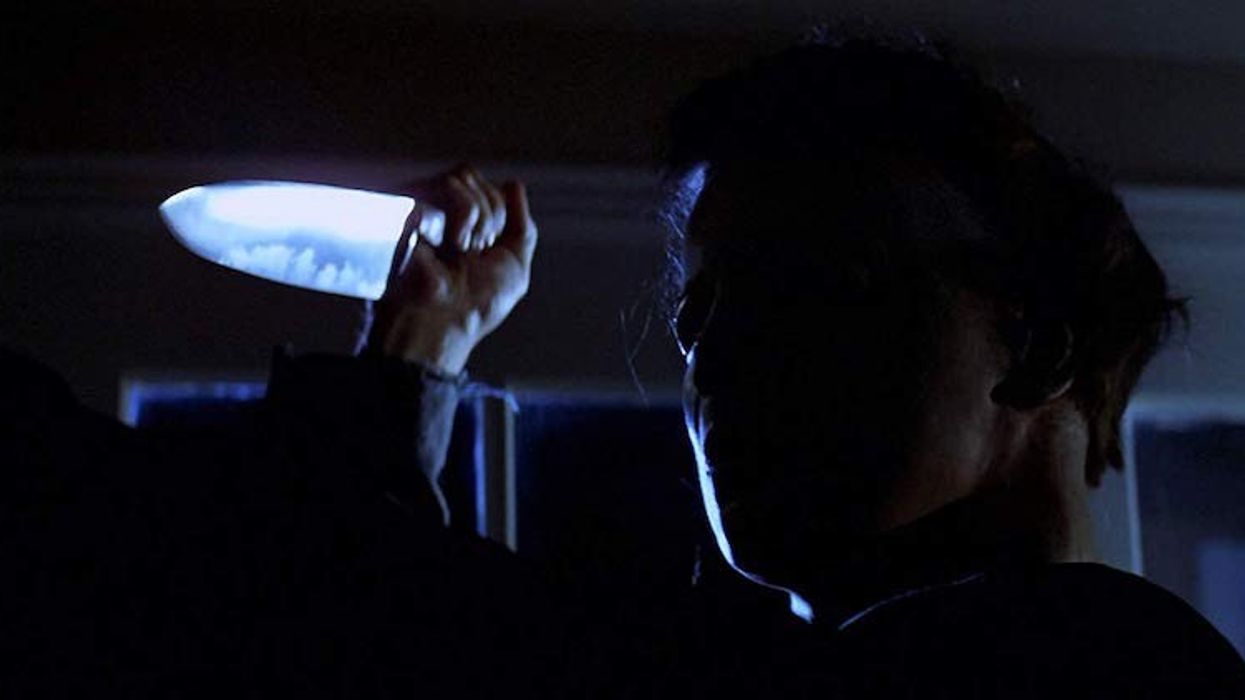The Lighting in 'Halloween' Is a Masterclass in Creating the Classic Horror Look
It's October, so it's the perfect time to look at some Halloween classics for inspiration on scary lighting techniques!

Welcome to the most wonderful time of year...October, also known as Halloween Month. And what better horror flick to kick things off with than John Carpenter's classic 1978 slasher, Halloween, which follows murderer Michael Myers after he escapes from custody and returns to his hometown of Haddonfield, Illinois to terrify teens on the scariest day of the year.
Producer/director Sareesh Sudhakaran over at wolfcrow has put together a video looking at the lighting techniques used by DP Dean Cundey in the film's opening scene from a theoretical perspective, and defining how they work to make the hair on your neck stand on end.
Watch the video below.
Recently, we looked at how spooky lighting techniques can help create a particular mood in a horror project, and how shadows can be useful to create tension. This video, however, digs a little deeper into different methods and how warm and cool lighting creates contrast.
The Exterior Lighting
The sequence is shot as a point-of-view sequence from young Michael Myers' perspective as he approaches the house. In the exterior shot, one large light source throws cool light from the right to left. This light source is probably a tungsten light with a blue color gel. (If you're new to film lights, read our primer here.)
On the porch, there are a couple of practical lighting sources, including the famous jack-o'-lantern and a porch light.
Light from an upper-floor interior light comes through the window on the right.

Approaching the house, we get a better view of another practical light...the overhead foyer light, as it backlights the actors inside.
Layering
One technique used in this sequence is layering of light sources. There is a mix of hard and soft shadows, depending on how far objects are placed from a light source, as well as a mix of warm and cool light types.

The contrast between warm and cold light here might convey the audience's reaction to the scene. The blue light is off-putting, but the warmth of the interior might signal hope and safety. This is broken up, however, with the hint of blue.
There's a similar moment as Michael moves through the back rooms of the house, which start in harsh blue and black shadows. He turns on a kitchen light, but there's still a hint of blue cast coming through a window.
Similarly, as the boyfriend exits the house via the foyer, the warmth from the overhead practical light contrasts with the blue surrounding Michael, as well as the blue lighting coming from outside.

Wrapping Up
The lighting in this sequence, as well as the film as a whole, has a lot going on, but when it comes to aesthetic horror tropes, Halloween is an absolutely seminal piece of blood-soaked art.
It's got hard shadows, fast falloff, silhouettes, and sharp contrast, all of which became essential pieces in the horror genre puzzle.
Have you ever tried layering warm and cool colors in your own projects? What kind of mood were you aiming for? Let us know in the comments!
What's next? Check out more horror resources
If you're making horror on a low budget, we've got tips for DIY filmmaking. If you want to dig even more into scary families of the horror genre, look no further than Hereditary and The Babadook. We've got plenty of pieces on horror master himself John Carpenter, too.
Source: wolfcrow











